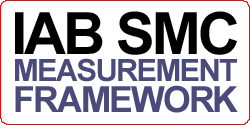At January’s meeting of the IAB Social Media Council, Nick Stringer, director of regulatory affairs, presented to the council about transparency in social media, following the decision by the Office of Fair Trading to rule that Handpicked Media was to disclose when promotional comments had been paid for.
Unfair Trading Regulations 2008 prohibit the misleading of consumers where this is likely to have an impact on the decision about a product / service / brand.
It therefore prohibits the use of editorial content to promote a product – where the promotion has been paid for – without making it clear to the consumer.
The Unfair Trading Regulations are enforced by the Office of Fair Trading (OFT). The OFT’s statement also reinforced the transparency requirements of the law. From 1 March, the Advertising Standards Authority (ASA)’s self-regulatory remit includes ‘marketing communications’ on Twitter and Facebook. The OFT remains the legal ‘back stop’.
In the USA, the FTC’s revised Endorsement Guide provides case studies of when it believes those paid to promote a product / service / brand should disclose this. It includes social networking sites, blogs, forums & message boards. It does not specifically recommend ways for marketers to disclose a paid promotion, however it suggests the use of hash tags on Twitter. For example : #paid ad / #paid / #ad
The OFT supports this – without endorsing a particular way of doing things – and sooner rather than later we can expect further guidelines (or from ASA).
The Council was asked:
Does it agree that the council should be proactive and recommend some good practice for the market?
Should the IAB prepare a one-pager with examples of good practice across social all media? For example, hash tags.
A sub-group was assembled and came back with some recommendations for the guidelines, however there seemed to be differing opinion at February’s meeting of whether more transparency was needed.
Here, a member of the sub-group; Fleur Hicks-Duarte, explains the sub-group’s intended guidelines.
“The outcomes that we propose are as follows:
1) We would advise that as a minimum standard, everybody who is receiving or is likely to receive sponsorship from a brand or organisation should write words to this effect in their bio on all social platforms:
‘This profile may contain sponsored messaging’; ‘Sometimes brands pay me to write about them on this site’
The wording of this declaration should leave no ambiguity as to there having been a paid transaction.
This however should act as a back up to:
2) Best practise for paid for social media. This is a clear indication within the body of the actual message that the post has been paid for.
For twitter this may be a hashtag; within a blog this should be a clear statement or footnote within the body of the text.
We do not feel that best practise would constitute tagging a blog post with the word ‘ad’, nor use of the phrase “I have been asked…”. If a paid transaction has taken place, this should be clear for the reader to ascertain within the body of the message.
Words such as Sponsorship, Advertisement and Paid For (or clear abbreviations of these) are advisable words to use due to their clarity as an indicator of a cash value exchange.
Additionally, we would advise insertion of a link such as ad.ly, which would click through to a page on the ASA or OFT website, or a page provided by the brand/agency should they so wish. The page, which, mindful of our ethnically diverse society, would ideally be available in all languages and have all disability options applied. This site should make clear to any audience what ‘paid for’ means. In layman’s terms and succinctly.
If the ASA/OFT are pleased with these initial thoughts, then perhaps we could talk further to them about the detail of what this encompasses, but were reticent to go into too much detail as it opens a Pandora’s Box full of scenarios and applications.
We feel that applying these guidelines should satisfy not only their legislative requirements, but also help the Paid Messenger cover bases by applying at least the minimum standard requirements.
The thinking behind it is: What can we practically advise – mindful of all the scenarios, platforms and contexts that can be played out within social – that can be used across social as an entirety as a best practise guideline once the official governance comes into play in March.
This serves the following:
a) helps practitioners who may be unsure as to how to protect themselves
b) supports the ASA regulations
c) forges the IAB’s position as helping lead the way in practical application within social.
‘Will people know what a hashtag is?’ and ‘Do we need to outline what is already law?’ are not the issues being discussed here. The issue is: How do we devise a practical guideline (for practitioners) that can help them when the law is in place to prevent said law from beating down on them.
Hence the two-pronged approach. If people don’t know what a hashtag is then if they’ve implemented the minimum standard, then they are covered, by law, for any comms mishaps. For instance, in case they mention drinking a brand in the recording studio, and they are sponsored by that brand.
I agree with what Nick (Stringer) said in January’s meeting that this is essential, it is progressive and it puts the IAB Social Media Council on the map in a way that no other trade bodies are on this matter.”
What do you as a member of the Social Media Council think? We will be looking at publishing guidelines towards the end of March so a firm decision needs to be made at Tuesday’s meeting.



